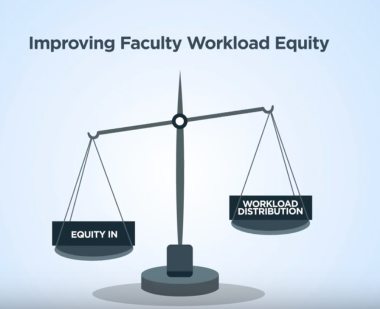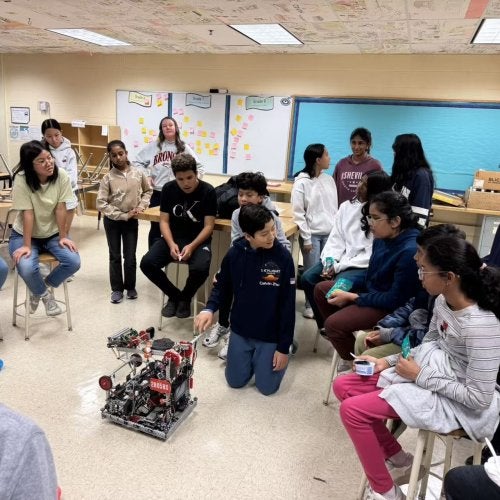

Undoing Disparities

A new UMD-led study shows how academic departments at universities nationwide can take action to lessen workload inequities that often saddle women and underrepresented minority faculty with extra mentoring, advising and campus service work.
While those are vital functions, such responsibilities leave less time for research. This proves especially problematic in STEM fields, where research products are highly valued and can affect career advancement, including tenure and promotion rates.
The issue of how departmental workloads are divided up have received far less attention than hiring. As a result, men are doing more research while women do more undergraduate teaching, according to the study published in PLOSOne.
"For decades, national surveys, interviews and focus groups have shown that faculty are dissatisfied with workload—some even leave institutions because of it,” says study coauthor KerryAnn O’Meara, associate dean in UMD’s College of Education.
Dr. O’Meara and colleagues from UMD, North Carolina State University and the University of Massachusetts Amherst designed an experiment featuring four interventions designed to balance faculty workload, implementing it over 18 months in 17 STEM departments (including the sciences, social sciences, mathematics and engineering) at a variety of institutions in Maryland, North Carolina and Massachusetts. They also monitored, but did not intervene, in 13 control departments.
The four-step process involves:
*Conducting a workshop using existing research to help department members recognize the role of unconscious bias in work disparities, says Courtney Lennartz, study coauthor and doctoral student in UMD’s Department of Human Development and Quantitative Methodology. “What the research has shown is that implicit bias is a factor in how work is distributed,” she says. “So, people may not be aware that they are asking women or minorities to serve more often in these positions.”
*Creating “dashboards” to transparently display workload activity by department members, allowing everyone to see balances of teaching, advising, service and research.
*Using the data from the dashboards to identify existing equity issues, along with sharing evidence-based workplace practices to “mitigate bias and proactively design for equity,” according to the study.
*Offering an optional professional development webinar series in which the departments discussed the action plans they’d developed to tackle the problem.
The results indicate that the intervention workshops made a difference. Compared with the control departments, faculty in participating departments were more likely to report equitable work practices and conditions, and willingness to tackle workload inequities.
“We found that these participating departments had better conditions for work practices in place that would help support equity across workloads and that their departments were more ready to institute change,” Lennartz says. “They felt that teaching and service work was more fair across the department in terms of gender, rank and ethnicity. We’re hopeful that as departments look at their distribution of workloads that that can help them institute change for women and underrepresented minority faculty.”
The study is ongoing. Currently, the intervention program is being tested in an additional group of departments, this time under a condensed timeline of less than a year. Eventually, the goal is to offer a set of resources that academic departments can use to nurture fairness and faculty satisfaction in their working environment.
“We are in the second phase of the project now, and beginning to disseminate some of our findings,” Dr. O’Meara says. “In the fifth and final year of the project we hope to share resources and materials created so more departments can enact these practices and improve workload equity—in perception and reality.”
Additional information can be found at the Faculty Workload on Rewards Project.


